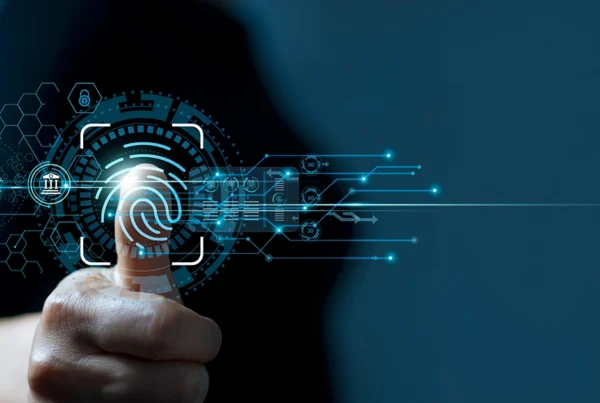Cybersecurity isn’t just for your company – it applies to your ecosystem too
Digitalisation is accelerating everywhere. New digital ecosystems are forming, creating unnoticed linkages across services and supply chains.
As technological advances and global interconnectivity accelerate exponentially in the Fourth Industrial Revolution, unprecedented systemic security risks and threats are undermining trust and growth.
Countries, corporations and individuals are taking advantage of the rapid spread of the Internet and smart devices. In this context, a single vulnerable link is enough to bring down the entire system, just like the domino effect.
As the world grows more interconnected, the speed of development makes it difficult to assess the impact of change. A secure approach to digital development today will determine the shape of our future for decades to come. Having the right tools in place is key to protecting organisations from attack now.
Cybersecurity is THE most important defensive strategy your organisation can employ. Failure to do so, across your entire digital supply chain, not just internal ‘behind the firewall’, your organisation cannot defend itself against data breach campaigns, making it an irresistible target for cybercriminals.
What is Cyber Polygon?
We are living in a more complicated and fast-changing world with interconnected problems and challenges. Businesses, governments and society are undertaking initiatives to define these problems, search for solutions and take action.
But how do the world’s efforts to address these challenges feed into interconnected global ecosystems, or attract wider public attention for more impact?
A cyber attack with COVID-like characteristics would spread faster and farther than any biological virus — World Economic Forum
On July 9th, the Cyber Polygon event combined two tracks:
- the world’s largest cybersecurity exercise for corporate technical teams
- an online conference featuring senior officials from international organisations and leading corporations
The central theme of the event was a ’digital pandemic’: how to prevent a crisis and to reinforce cybersecurity on all levels.
Cyber Polygon aimed to:
- develop competencies in repelling cyberattacks
- engage the management of global organisations and corporations in the cybersecurity dialogue
- raise public awareness in cybersecurity
Strategic goals
The event enabled organisations to assess their cyber resilience, exchange best practices and bring tangible results to the global community:
- developing skills in repelling cyberattacks
- expanding the practical knowledge of technical specialists
- engaging the management of international organisations and corporations in the cybersecurity dialogue
- raising public awareness of cybersecurity
The event consisted of two parallel tracks:
Live stream
The conference featured global leaders and experts, including Mikhail Mishustin, Prime Minister of the Russian Federation, and Klaus Schwab, Founder and Executive Chairman, World Economic Forum as well as top officials from INTERPOL, ICANN, Visa, IBM, Sberbank, MTS and other organisations.
The experts addressed the latest trends and technological threats, shared their experience in creating cybersecurity ecosystems, talked about the transforming threat landscape and discussed the problem of fake news and how to discern misinformation on the Web.
5 million+ people watched the live stream
Technical training
The participants took the side of the Blue Team and worked on protecting their segments of the training infrastructure. The organisers represented the Red Team and simulated the attacks.
The exercise included two scenarios:
- First, the participants practised containing a massive cyberattack in real time.
- Then the teams had to investigate the identified incidents by applying traditional forensics as well as threat hunting.
120 teams from 29 countriestook part in the technical exercise
Conclusions
Participants could assess their capabilities
It was not clear until the end of the exercise who would take the first place. Different teams were leading at different stages, which means that none of them could fully utilise the techniques at their disposal.
The exercise allowed the participants to identify their strengths and weaknesses.
Financial institutions and IT delivered the best results
Banks and companies from the IT industry demonstrated the highest resilience. Security assessment expertise in these sectors is quite well developed, with classic forensics and threat hunting widely applied.
Technical specialists are better prepared for investigation than for defence
Some of the team members lacked or had insufficient expertise in security assessment and protection of web applications.
At the same time, all the participants were awarded points for the first round of the second scenario, which was indicative of each team having at least one expert competent in traditional forensics.
The threat hunting approach is uncharted for most organisations
Threat hunting is a relatively novel approach and the majority of organisations lack experience of applying its techniques. This creates the potential for developing teams, tools and external partnerships within companies.
More preparation = better result
The best results were predictably achieved by the teams who had asked many questions during the preparation and familiarised themselves with the new techniques and defences beforehand.
Whatever the scale of your ecosystem, its resilience is an issue of high significance. The tendency for businesses to create networks of contractors and partners will continue, making the world ever more interconnected. In that regard, a proper approach to building ecosystems that foresees risks will ensure resilience, competitiveness and secure digital development for years to come.
Talk to one of our team today to learn more about our capabilities; how we’re bringing people, business and technology together; and what this means for you.






